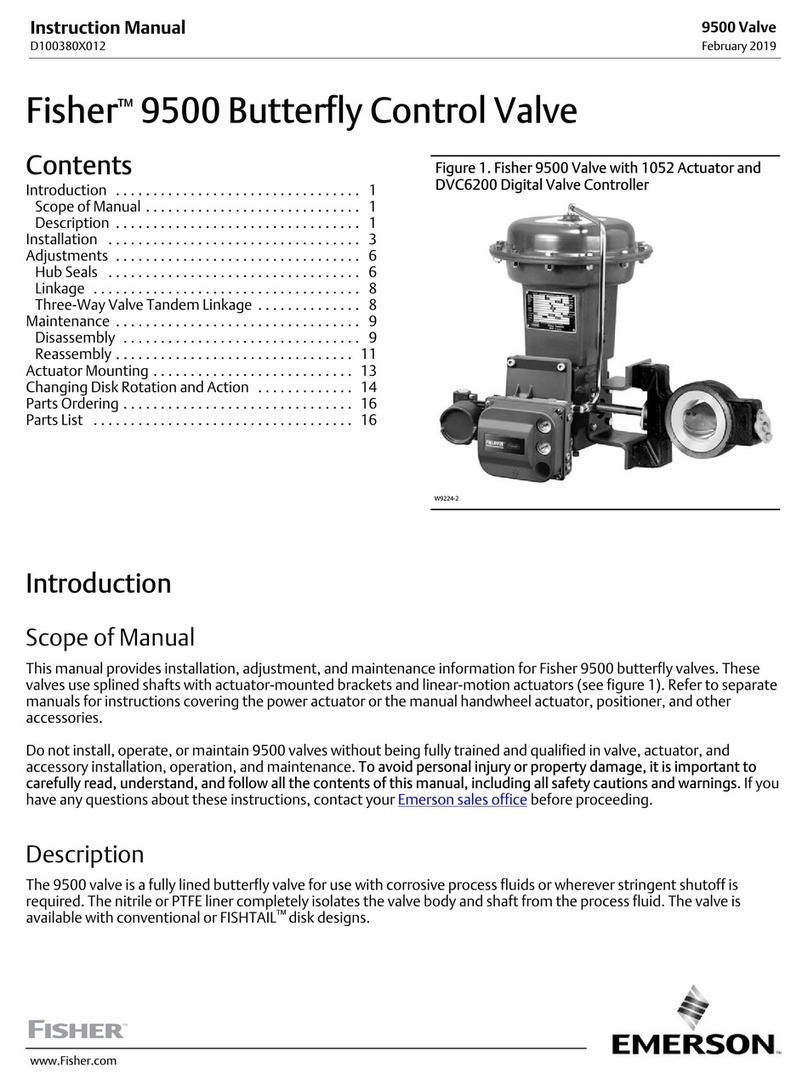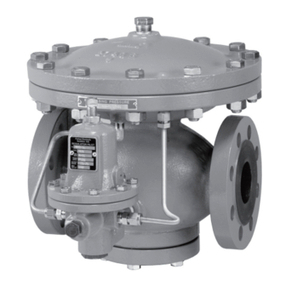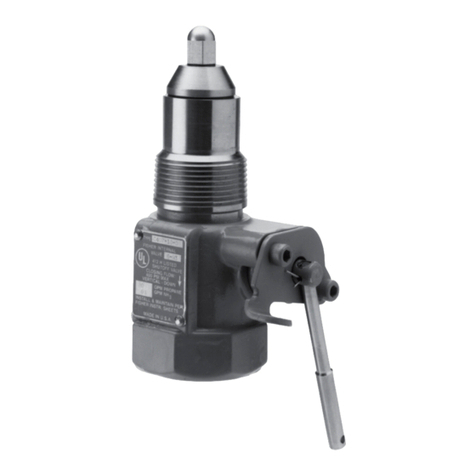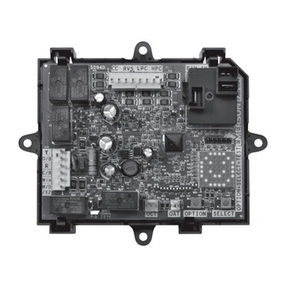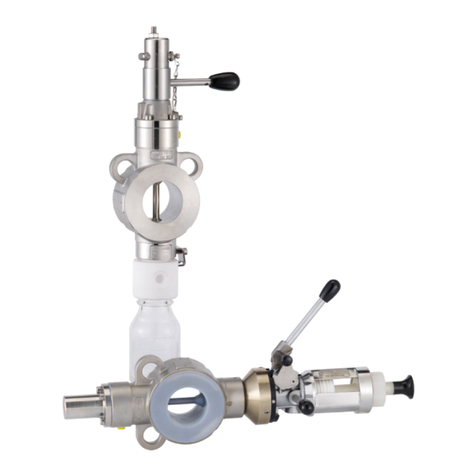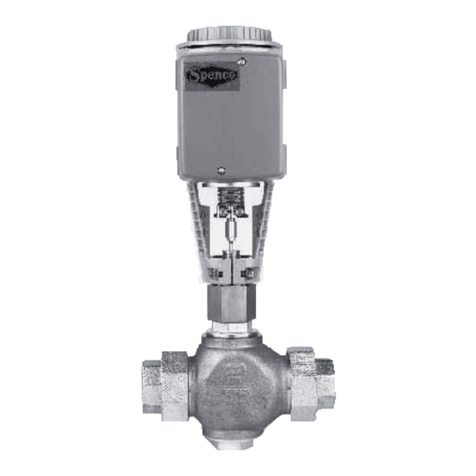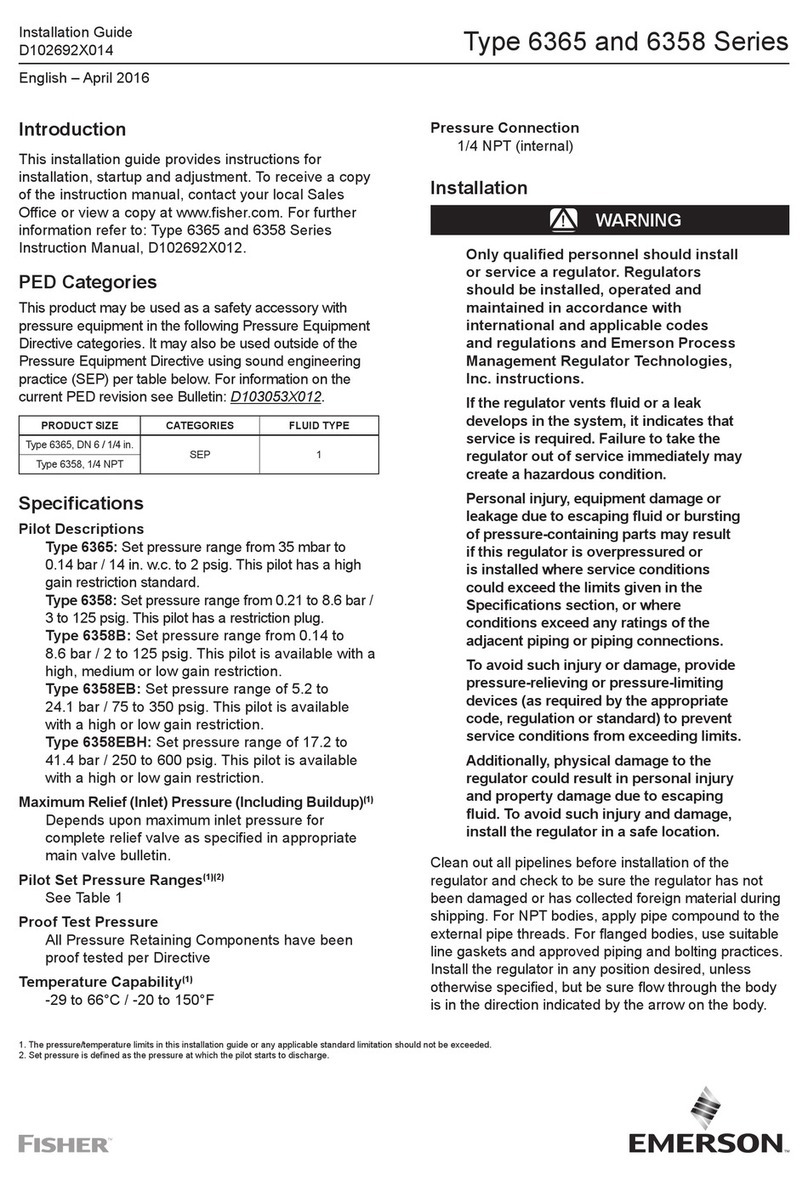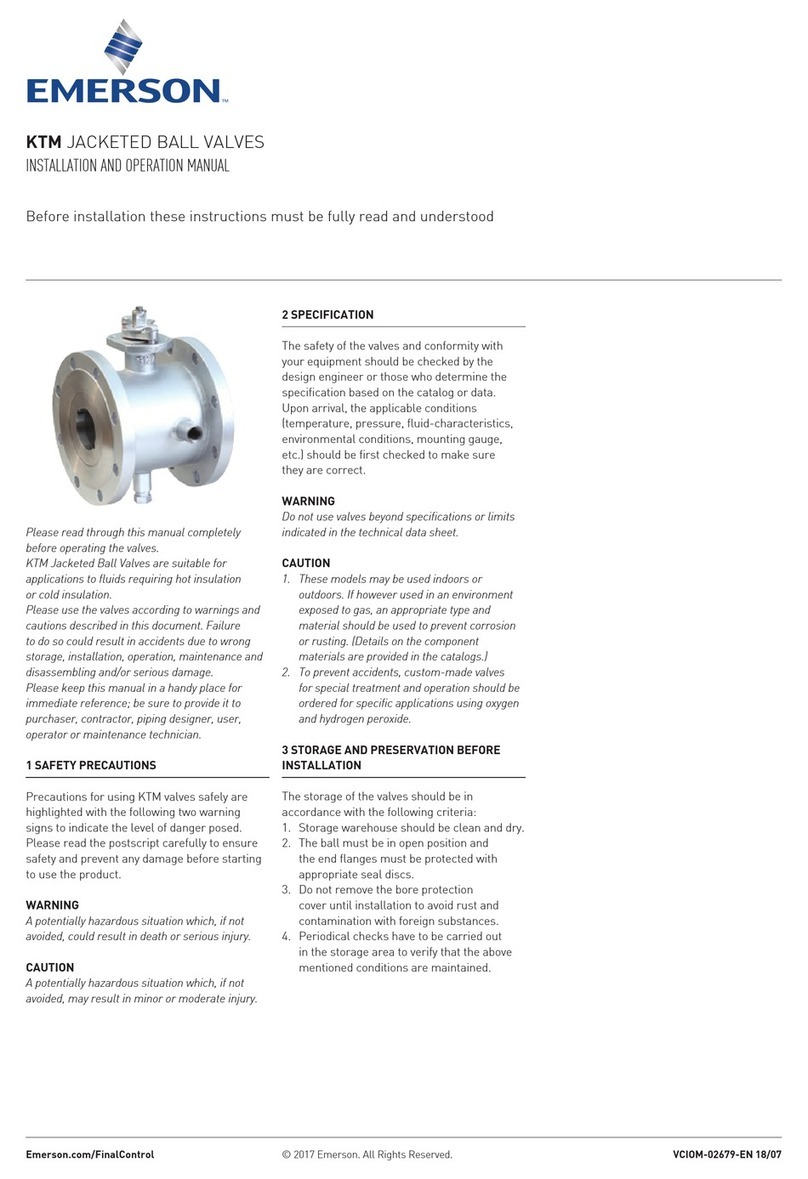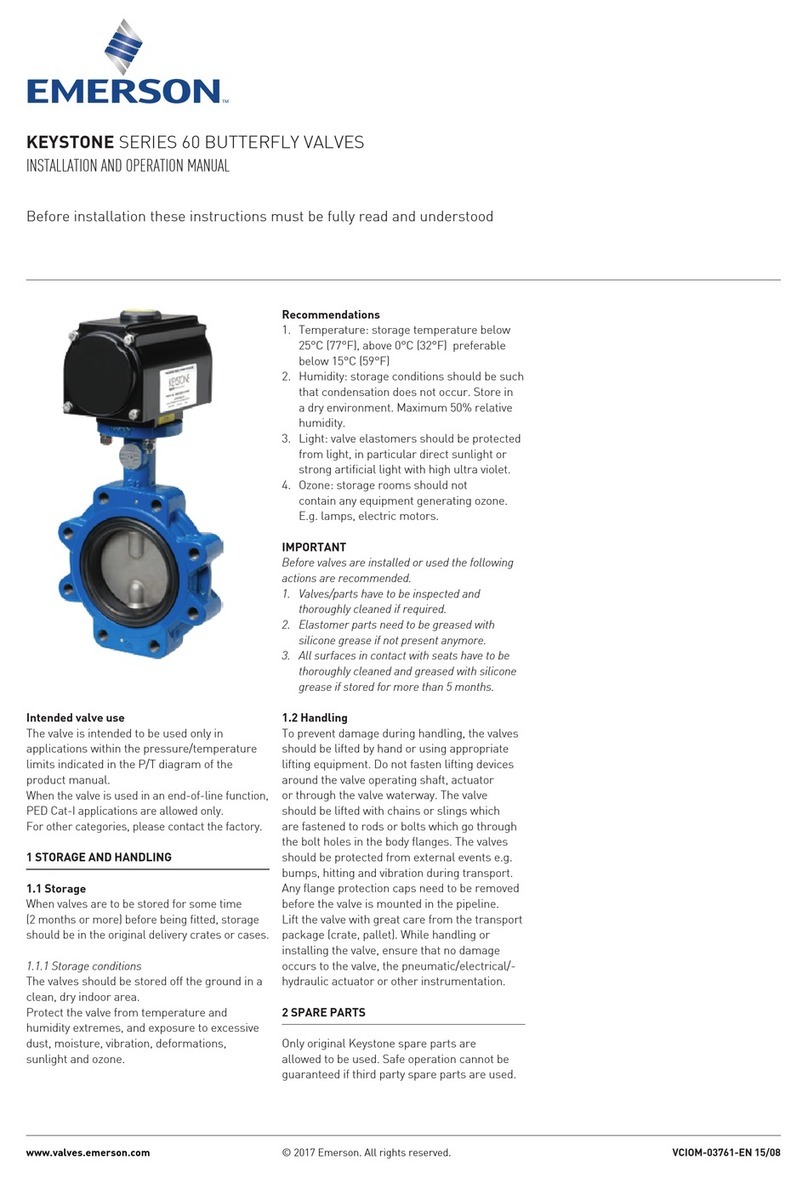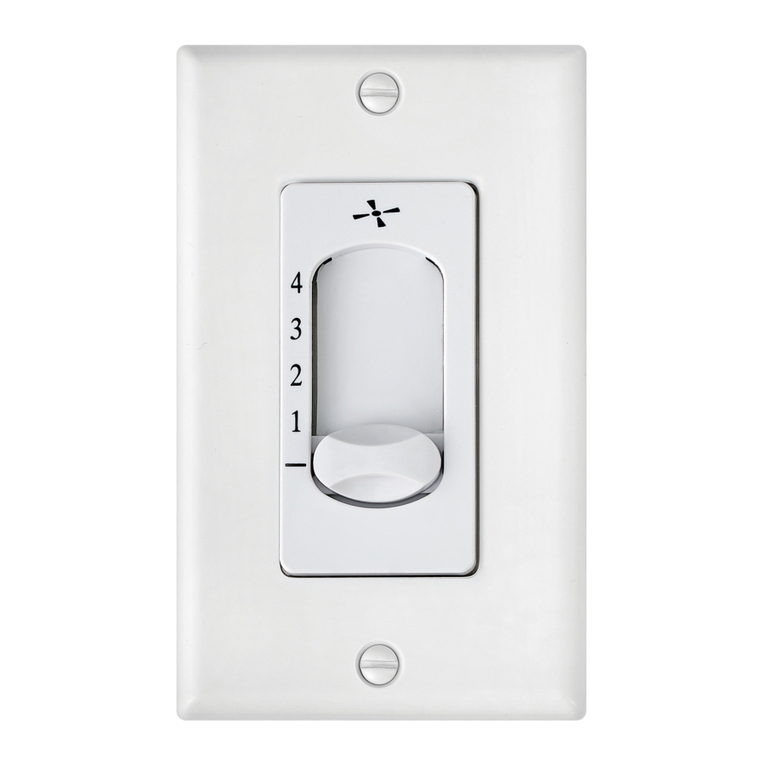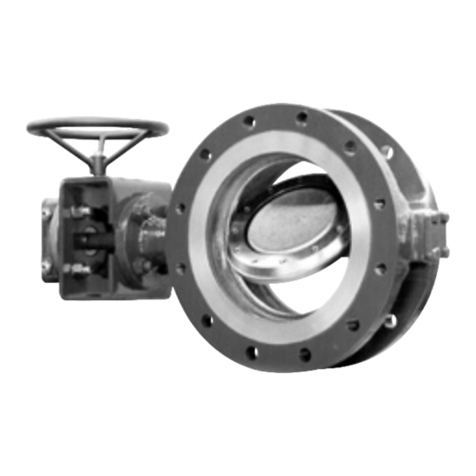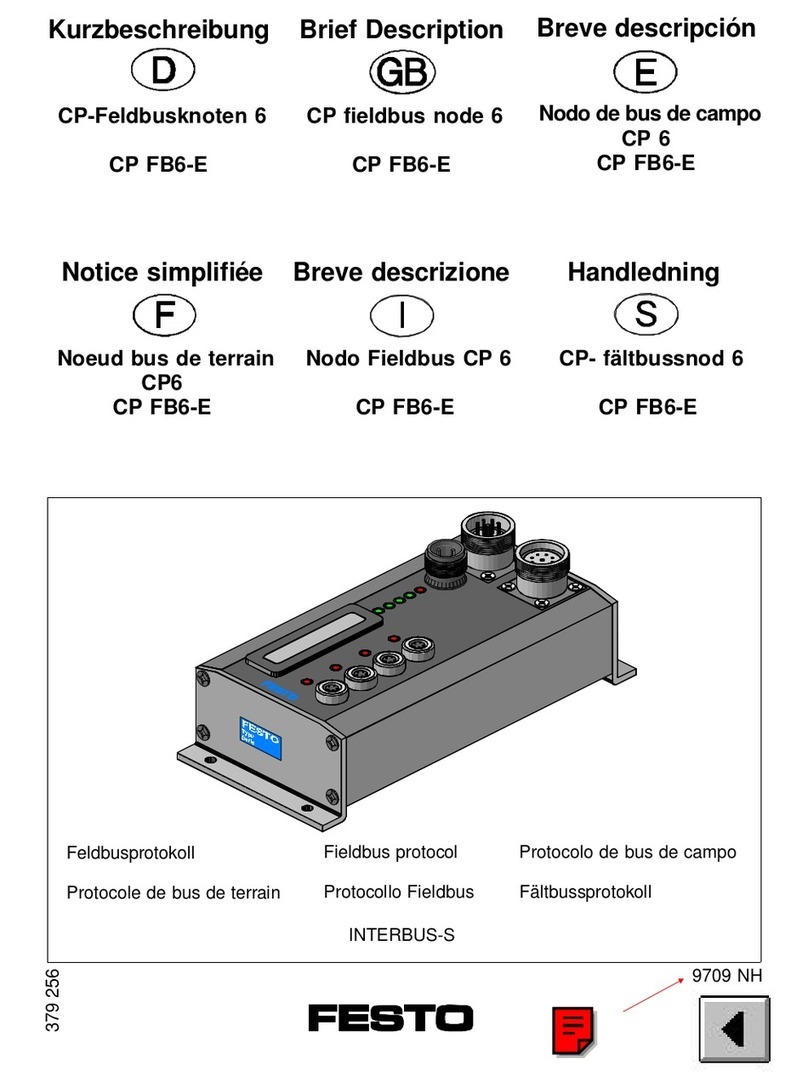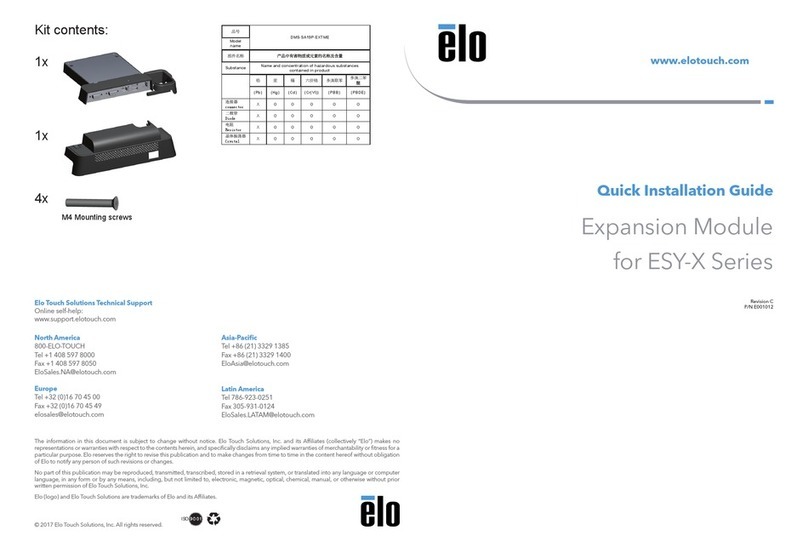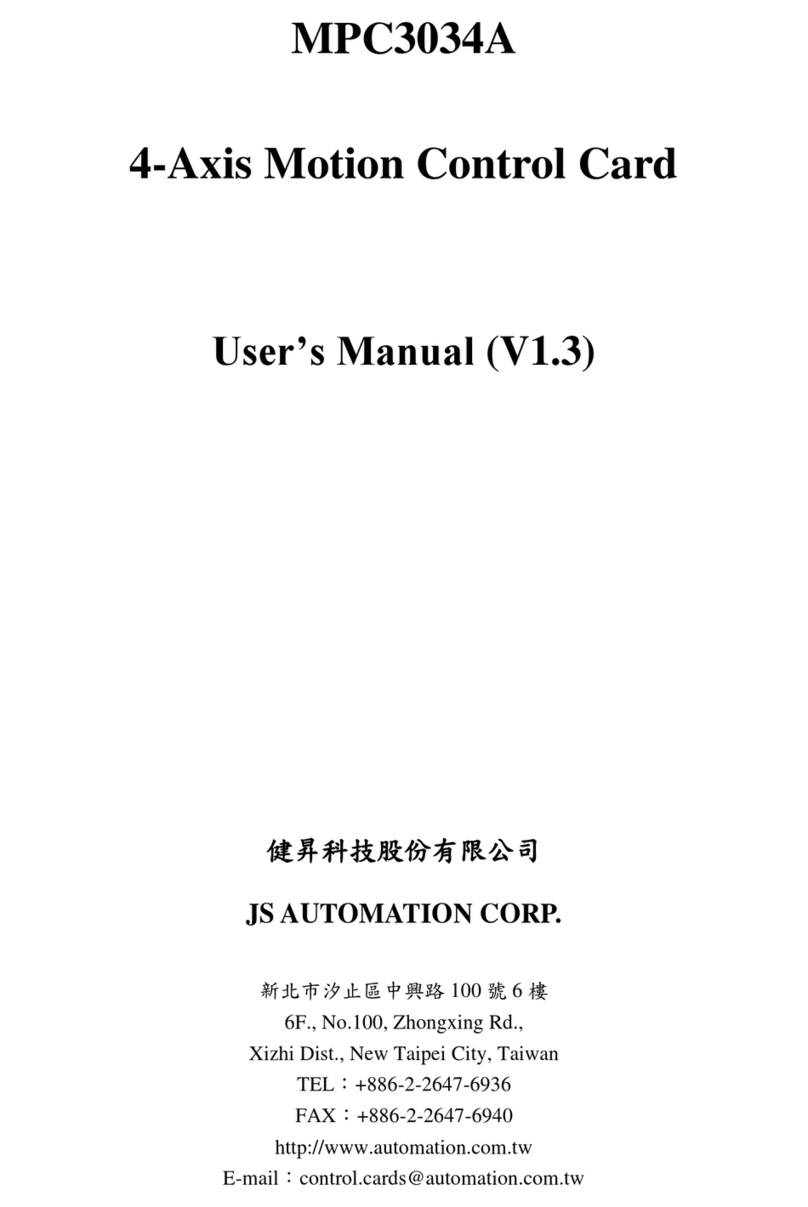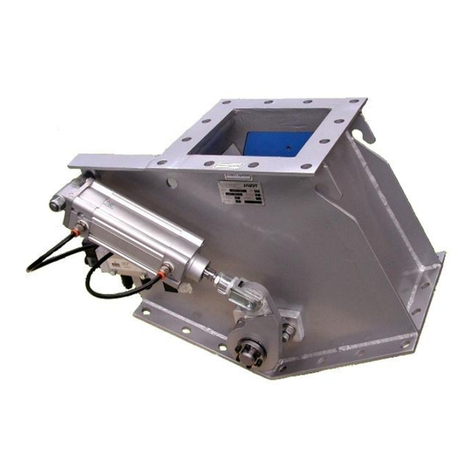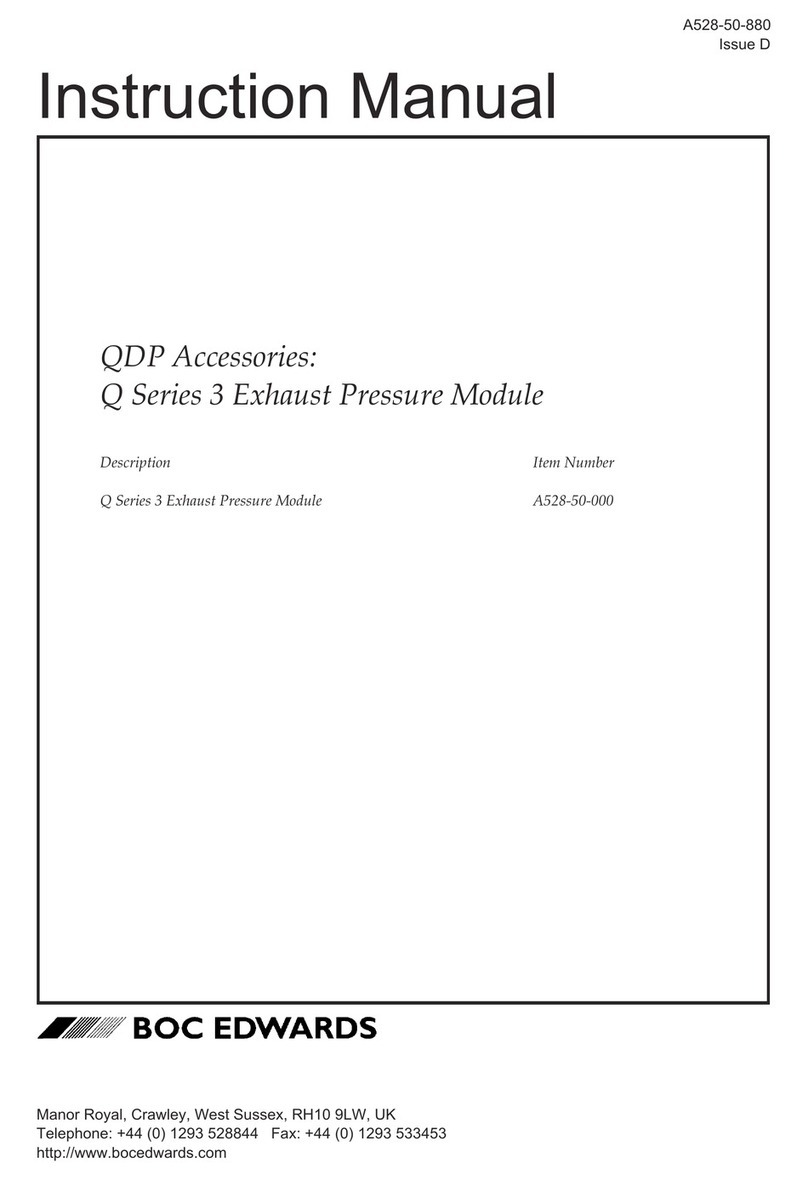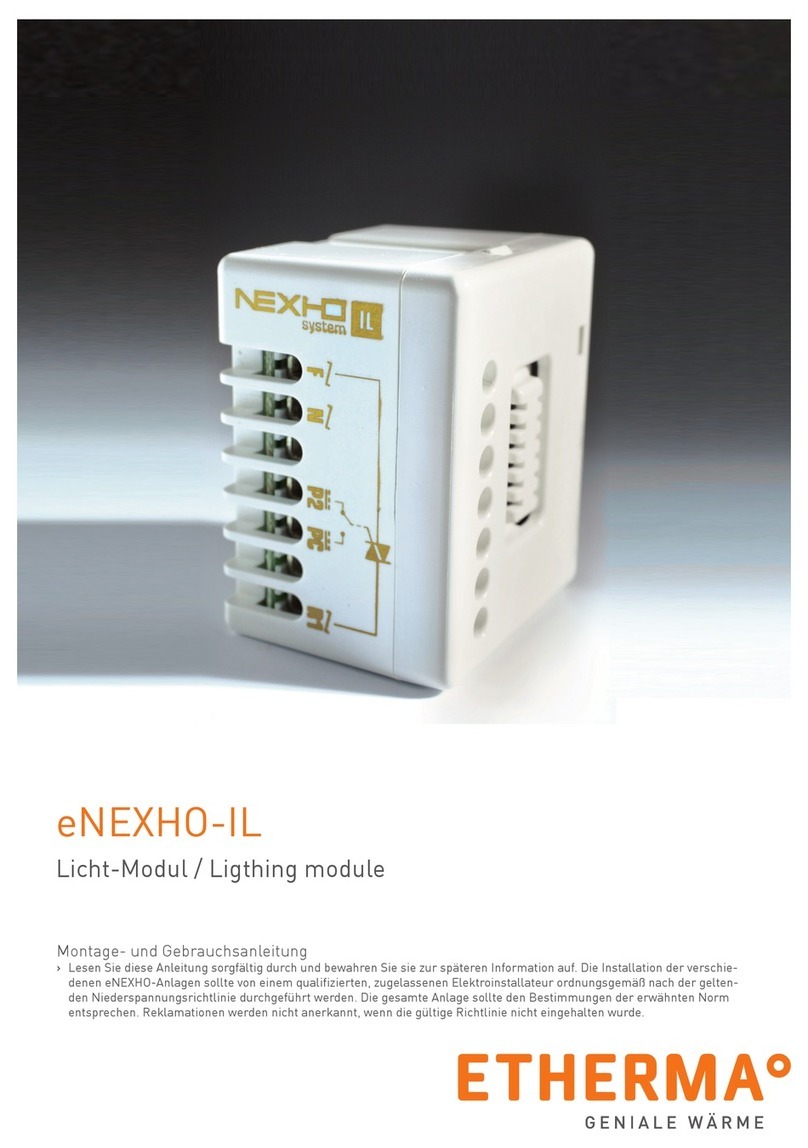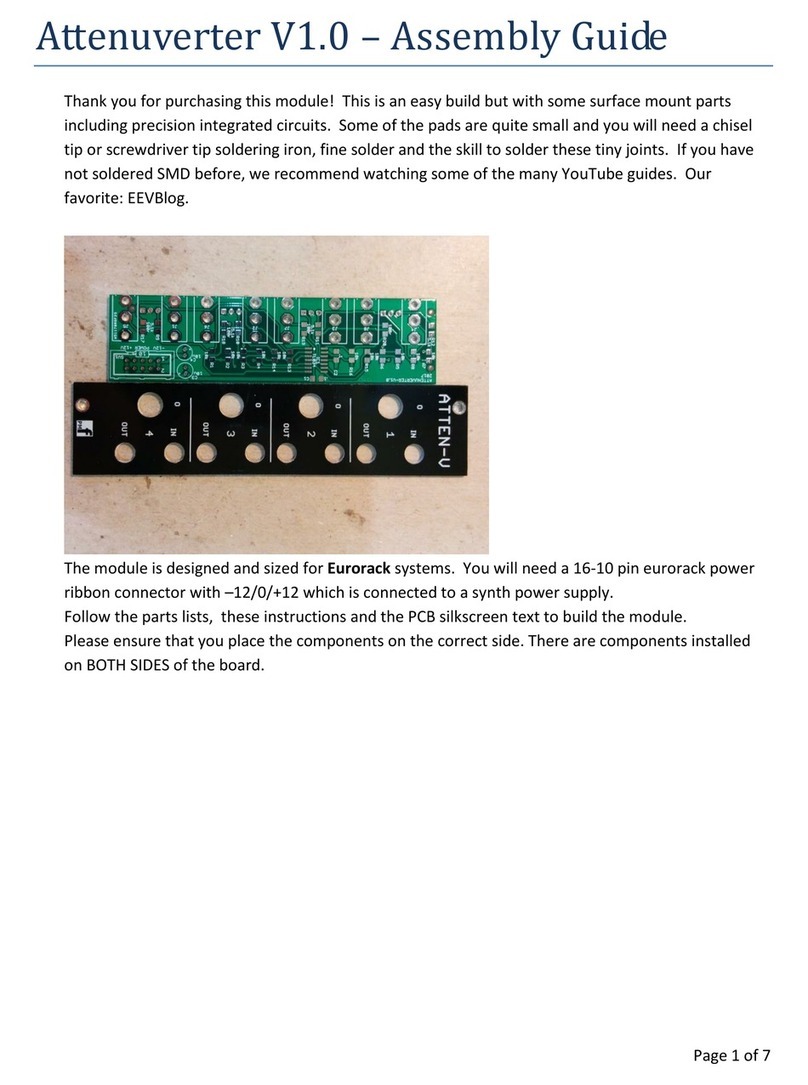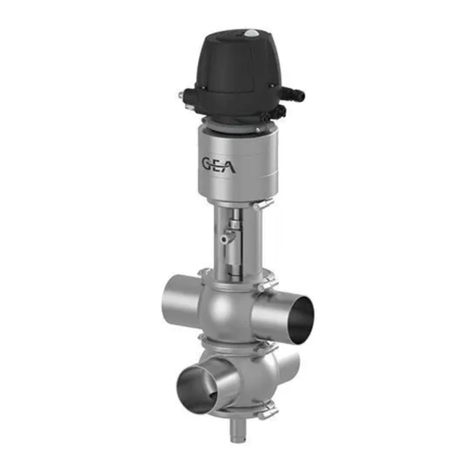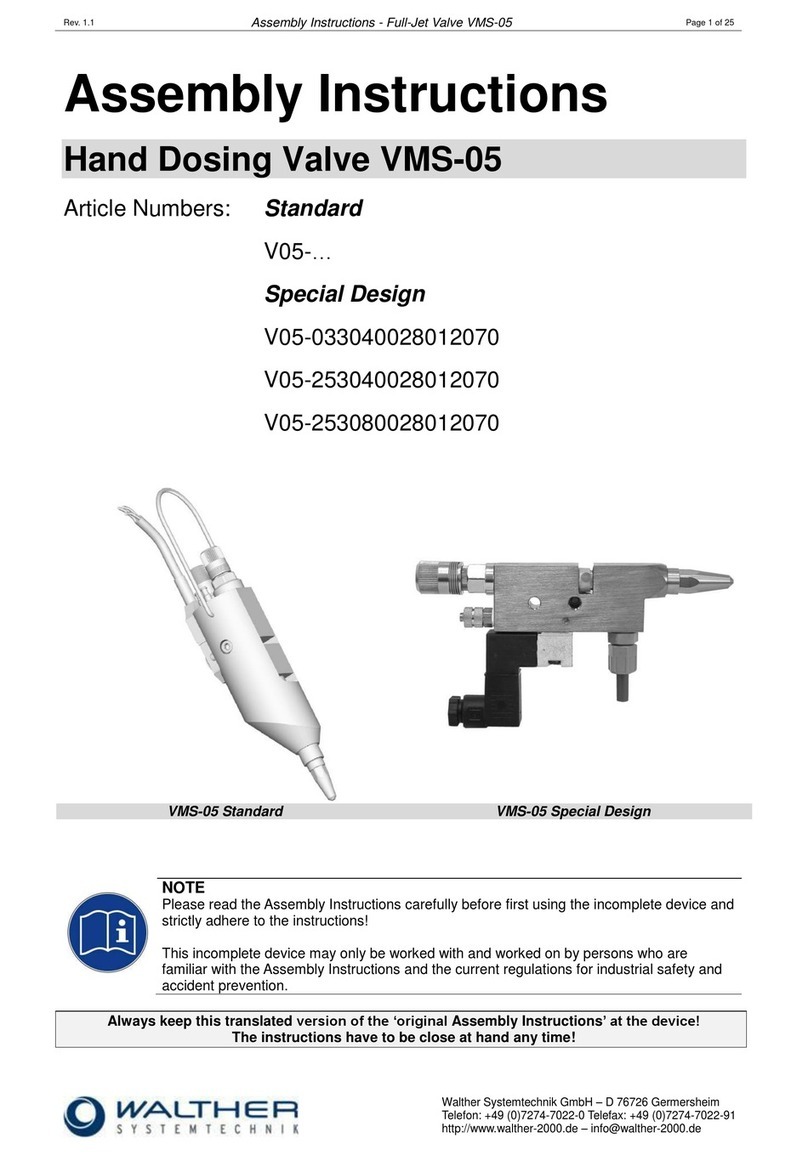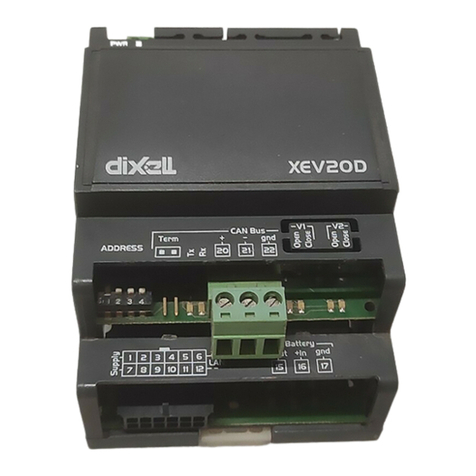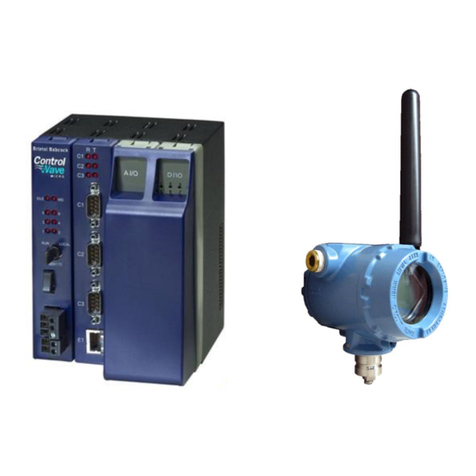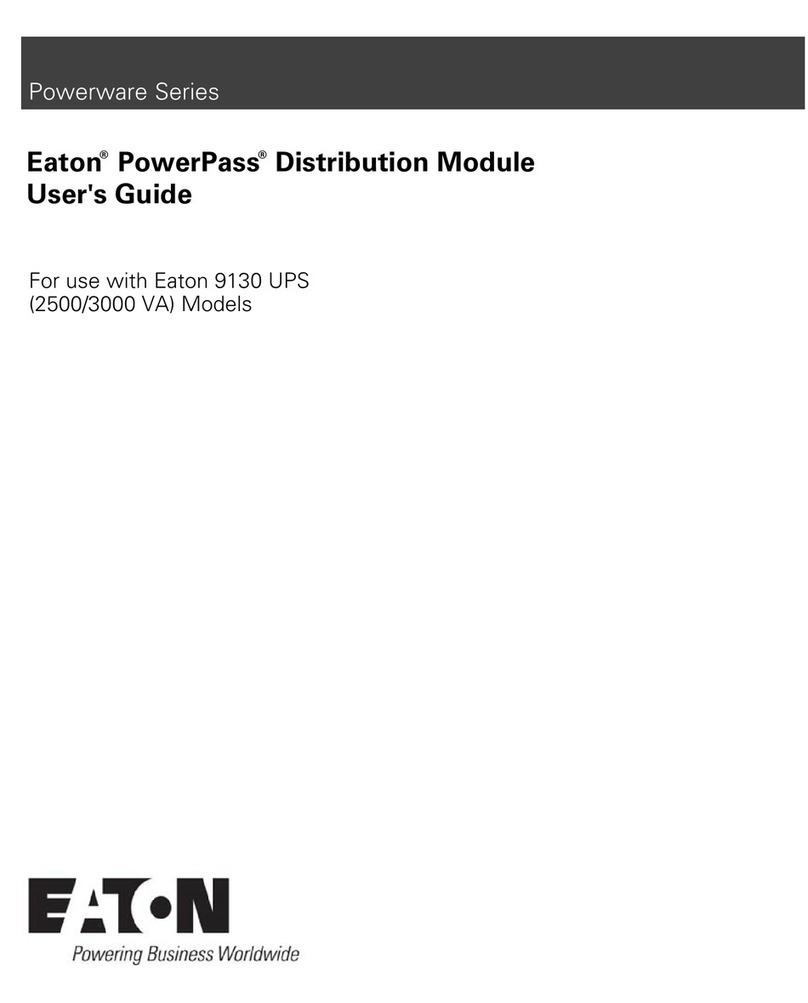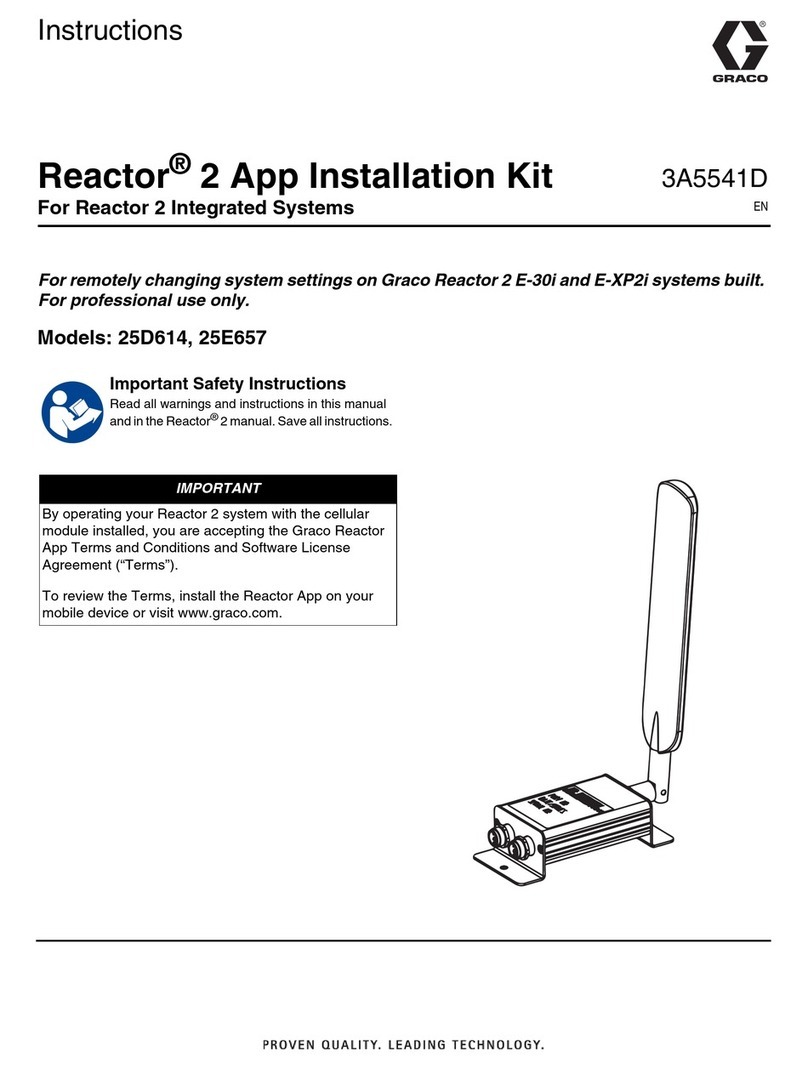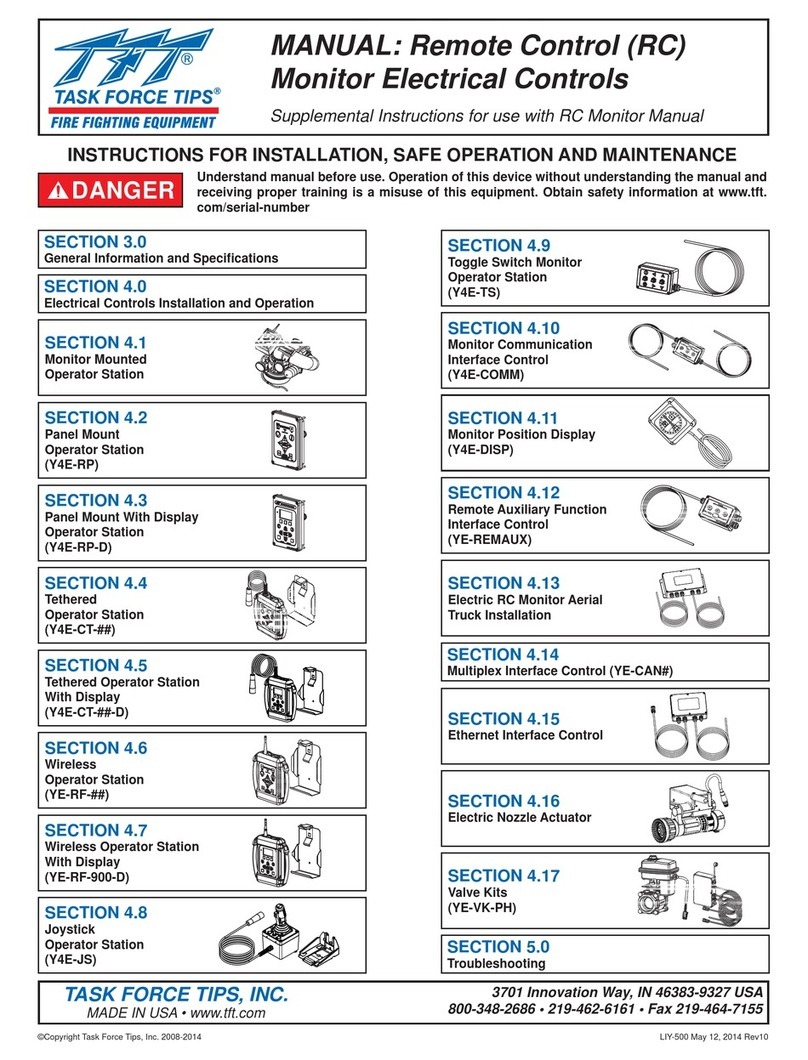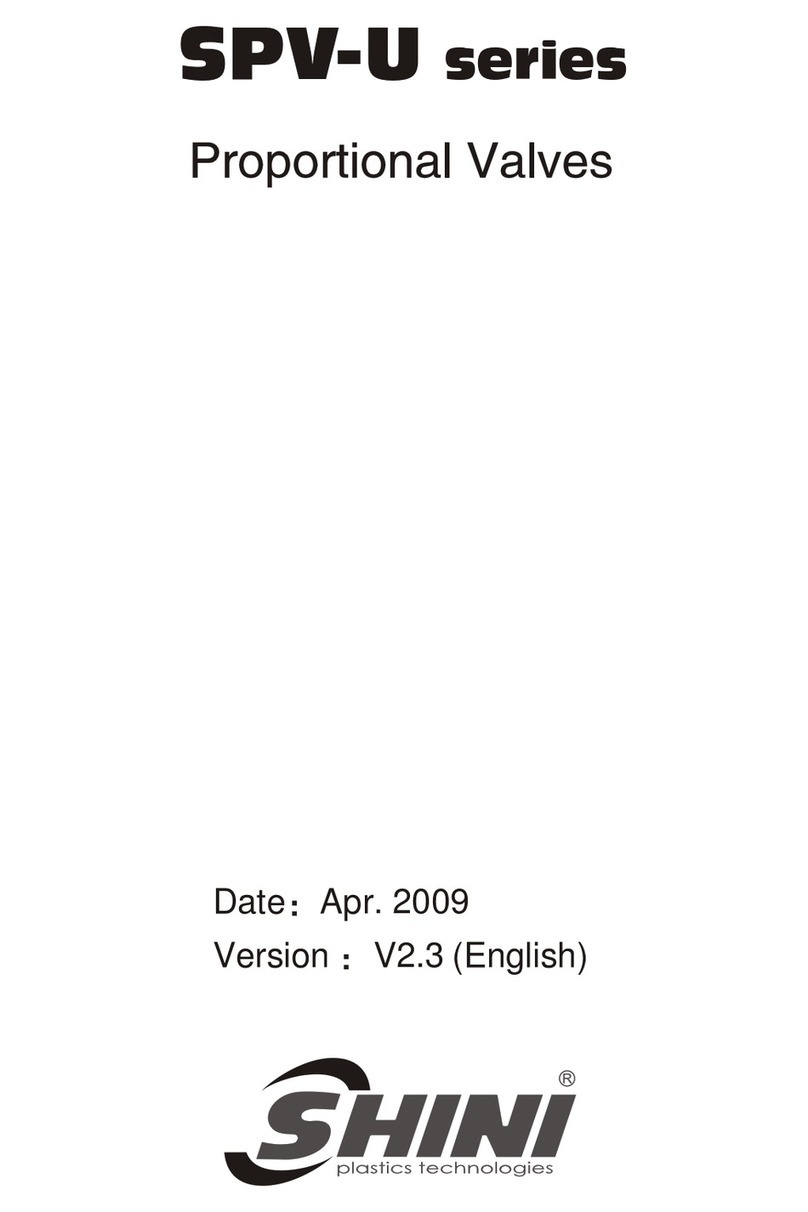
6
Hydrostatic testing using hydrostatic
testplugs
Before imposing the hydrostatic test pressure
on the vessel or system, perform the following
operations:
CAUTION
Before hydrostatic testing, the O-ring and backup
ring must be installed.
• Preparation for hydrostatic testing -
Weldedinlet safety valves
The O-ring, backup ring and the test plug
pin are shipped in a box attached to the
superstructure (see Figure 3). The contents
ofthe box are marked for identification.
To install the O-ring and backup ring refer
toFigure 3.
• Hydrostatic test
After the above preparation, the safety valve
is ready for hydrostatic test. Observations
should be made at the start of the test to
confirm that the O-rings have been installed
properly and there is no leakage when
pressure is applied.
• Assembly of valve
After completion of the hydrostatic test,
remove the hydrostatic test plug from
thenozzle.
CAUTION
Be sure the test plug is seated on the 45°
angleonthe nozzle inside diameter.
CAUTION
Make sure the cap has hand-tight contact with
the plug. Make sure there is enough thread
engagement of the cap onto the nozzle.
CAUTION
Tightening of the cap will not reduce leakage.
If leakage is evident, remove all pressure from
the vessel or system. Replace the O-ring and
thebackup ring.
WARNING
Do not try to assemble the valve or remove
the steel blocks from under the bottom spring
washerwithout use of proper servicing and
assembly equipment.
Replace the test plug in the nozzle bore.
Place the test plug cap over the plug and
screwit down hand-tight.
Install the test plug pin.
The valve is now ready for hydrostatic test.
CROSBY®STYLES HC AND HCA ISOFLEX™ SAFETY VALVES
INSTALLATION, MAINTENANCE AND ADJUSTMENT INSTRUCTIONS
6 HYDROSTATIC TESTING
General information
Depending on the type of inlet, hydrostatic
testing of safety valves may be carried out by
one of three means: blank flanges, test plugs or
test gags. In all cases, hydrostatic test pressure
must be limited to 1½ times the nameplate set
pressure of the valve.
Welded inlet safety valves
All Style HC/HCA welded inlet safety valves are
prepared for shipment from the factory with
hydrostatic test plugs, as detailed in Section 4 -
paragraph 'Factory preparation of welded inlet
valves for shipment' and Figure 3.
Hydrostatic tests of these valves shall be
conducted using hydrostatic test plugs as
detailed in paragraph below 'Hydrostatic
testing using hydrostatic test plugs'.
Flanged inlet safety valves
Flanged inlet safety valves should not be
installed for hydrostatic testing. Blank flanges
should be used instead of gagging the safety
valves. This prevents possible damage to the
safety valves due to excessive tightening of
the gag screws or leakage during hydrostatic
test which may result in costly repairs.
Blank flanges must be removed and the
safety valve reinstalled before the vessel
isplacedinservice.
If blank flanges are not used and the safety
valves are to be installed for hydrostatic
tests, Emerson recommends that hydrostatic
test plugs be used for hydrostatic test.
The detailed procedure is outlined in the
paragraph following. Hydrostatic test plugs for
flanged valves are optional equipment and are
providedonly when ordered.
CAUTION
Additionally, hydrostatic test pressure must be
limited to 10% above nameplate set pressure
when a test gag is used.
Remove the protective cover from the valve
body. Unscrew the cap from the nozzle.
Remove the test plug from the nozzle bore.
• Preparation for hydrostatic testing -
Flanged inlet safety valves
Flanged inlet safety valves are shipped
from the factory fully assembled. To use
the hydrostatic test plug, the valve must
be disassembled according to Section 9 -
paragraph 'Disassembly retaining spring
compression'.
• Installation of hydrostatic test plug
(seeFigure 3)
Inspect the hydrostatic test plug O-ring
groove.
Note: make sure the groove in the plug
isclean.
Install the O-ring and backup ring in the
testplug groove.
To aid removal, place the hydrostatic test
plug pin in the hole in the plug extension.
Unscrew the cap, which will engage the plug
pin and exert an upward force as the cap is
turned, thus lifting the plug. Remove from
thevalvenozzle.
Clean the nozzle bore and seat and inspect
the seating surface. If seating surfaces are
damaged, repair according to the directions
in Section 9 - paragraph 'Repair procedure'.
Assemble the valves according to the
instructions in Section 6 - paragraph
'Initialsafety valve assembly'.
Contact Emerson field service for service
equipment (see Section 12 - paragraph
'Service equipment available').

